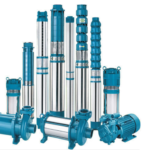
The different vegetation zones in Nigeria is as a result of the various climatic conditions across the country. From the country’s north to the south, different temperatures, weather conditions, and other geographical factors cause variation in vegetation.
As a result, Nigeria has different vegetation, each of which has unique features. So how familiar are you with these vegetation zones in Nigeria?
This blog post serves as a guide to the country’s different vegetation zones and their distinguishing characteristics. But before we do that, let’s first understand what vegetation means.
What Is A Vegetation?
The term vegetation simply means plants that cover or grow in a certain area. Usually, the types of plants that grow in a country depend on its climate zones.
Just as the climate and temperature are not the same in every part of the country, so are the plants and animals that live in that environment.
So, the relationship that exists between vegetation and the climate conditions in different parts of the country is known as vegetation zones. This means that vegetation is the type of plant that covers a particular area.
Vegetation Zones In Nigeria And Their Characteristics
There are many vegetation zones in Nigeria, but we will look at the major vegetation zones, as seen in many parts of the country. Below is a list of notable vegetation zones in Nigeria. They include:
1. Rainforest

In most parts of the country, there are a lot of rainforests. It includes tropical forests in high mountains and multi-tiered tropical rainforests that are reserved. This vegetation is mostly found on the right bank of the lower River Niger and the Cross River valley.
In this type of vegetation, you will see trees between 40 and 45 meters tall, forming the first upper tier. These trees are so big that they make up most of the country’s forest reserves.
Here, the second and third tiers of trees are closely scattered with epiphytes and then intertwined with lianas that reach for the sun.
In the north of the rainforest zone, it doesn’t rain more than 1600 mm yearly, which makes it difficult for trees to grow. This situation thereby leads to a reduction in the forest growth in that vegetation zone.
Also, there is less humidity, and the soil is drier. During the dry season, some trees shed their leaves. Still, the forests become sparse as you move north which leads to the beginning of the savannah vegetation.
2. Fresh Water Swamp Forest

One of the main vegetation zones in Nigeria is the freshwater swamp forest. Other components of the tropical rainforest of southern Nigeria are the coastal vegetation, riparian forest, mangrove forest, and lowland rainforest.
This vegetation zone is one of the world’s most productive ecosystems. It has many different kinds of vegetation and animals. A typical example of the freshwater swamp forest is seen in the Niger Delta area of the country.
This vegetation zone can be likened to the storehouse of biological diversity that serves as a suitable habitat for plants and some rare, endangered animals.
Also, because this vegetation zone is characterized by fresh water, it makes the zone suitable for fishing. In the Niger Delta part of the country, fishing is very common.
3. Sahel Savannah

The Sahel savannah has the most severe vegetation in the country since it is mostly desert. This vegetation is characterized by very short rainfall which is followed by an intense long dry season.
As a result, the annual rainfall lasts only about 3 to 4 months. And this is responsible for the low vegetation in these areas. In the places where you will find any vegetation, the grasses are usually very short.
Examples of plants you will see in this vegetation are Ngibbi, Leptadenia, Acacia raddiana, and African myrrh etc.
4. Sudan Savannah

The Sudan savannah is a type of vegetation in the north of the Guinea savanna. Here, rainfall decreases between 500–1000 mm per year. And then the dry season lasts more than six to seven months.
Also, some parts of this vegetation zone are covered with low, dense grass. And here there are various types of acacia, which give the landscape a unique appearance. The baobabs are very common, and it’s difficult to imagine the Sudan savanna without them.
Generally, the natural conditions of the Sudan savanna make it suitable for crops and the rearing of animals. It is good for arable farming where cattle, sheep, and goats graze on vast pastures.
Also read: What Countries have Temperate Climates? Top 8
5. Guinea Savannah

Guinea savannah has the largest vegetation zone in the country. Almost half of Nigeria’s territory is covered by this vegetation.
On average, this zone has about 1000-1400 mm of precipitation yearly. Here, the grass grows so tall that it could cover a person, and big animals can easily hide in them. In guinea savannah, you will mostly see elephant grass.
When classifying the trees in this area, some of them, like the drought-resistant kaya, Isoberlinia, and mitragina, stand above the grasses. Some of them have twisted trunks from fires that happen yearly.
When you look at the climate conditions, during the first half of the dry season, the savanna looks lifeless, and the trees stand bare. Then in the mid dry season, there is a smoke screen over the savanna.
This is because the dry grass is being burned, which is done yearly to prepare the land for crops. With the first raindrop in this area, young grass shoots and green leaves begin to grow to keep the Guinea Savannah alive.
6. Montane Vegetation

The Montane vegetation zone is a type of vegetation that grows in high mountainous regions. This plateau vegetation can be seen in places like Jos Plateau and Obudu in Cross River state.
Jos Plateau is one of the highest points in Nigeria, so it makes sense for the area to have this Montane vegetation. A typical Montane vegetation zone is made up of grassland and slopes, which are mainly forests.
This distinguishing feature makes it a perfect choice for rich crops and even small grains. And it is suitable for rearing grazing animals like cattle and sheep.
7. Mangrove Swamp Forest

Mangroves are a type of forest vegetation usually seen before the Atlantic Ocean. This type of vegetation is dependent on the coastal location of the zone. And because the sea is close by, its salt water influences the nature of this region.
In the Mangrove zone, the soil is very poor and contains salt. This type of area is good for rice farming, especially in areas that are stabilized and don’t have a lot of salt marsh. This vegetation can be seen in the coastal region of southern Nigeria.
We have been able to cover the notable vegetation zones in the country. However, there are still other minor vegetation zones. These comprise the Short Grass Savannah, Woodlands, and Marginal Savannah.
Conclusion
In this blog post, we have discussed Nigeria’s major vegetation zone. These seven vegetation zones are seen in different regions in the country.
These vegetation are affected by climatic conditions, the area’s physical attributes, and the environment’s temperature. That explains why as you travel around the country, you will see that the vegetations are not the same.
Hope you enjoyed reading this blog post.














